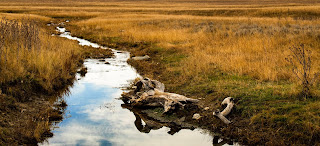When it comes to photography there are many questions regarding the ethics surrounding the work.
How much was the photo staged and how much was it altered in photoshop are just a couple of
examples of such things in question. While there are many topics that are a part of this debate for the
purpose of this post I will only be discussing the ethics of editing a photo in photoshop, and the baiting
of animals because, in my opinion, these are the two that pertain the most to digital nature photography.
Editing photos in photoshop can be useful to adjust the images before printing them. The simplest
forms of editing can be simply bumping up the exposure in the photo, making the colors more vibrant,
or even just cropping the image. Photoshop is a powerful tool though and is capable of much more.
Through photoshop an image can be altered so much that the end product looks nothing like the
original image. For example, if you went on a photography trip to photograph wolves, but were unable
to get any clear and decent photos of them, but you did get some fantastic landscape photos. Then in
photoshop, you could simply add a pack of wolves moving across your fantastic landscapes. Many
people consider this “cheating” because the wolves were not in the original photograph, and
depending on where you got the image of the wolf pack, someone else took the photo of the wolves.
The concept of editing and adjusting the photos after they are taken is a difficult concept for many
photographers to justify because for them the true art is in photography lies in the ability to take a
photo without the need for adjustment after the photo is taken. Then there are photographers who
feel that their art lies in what they are able to do to adjust an image in photoshop, editing photos in a
way that almost creates a new niche in art.
Another hot topic for debate between nature photographers is the baiting of animals. This is when a
photographer will hire someone to or they will do it themselves lure wild animals into a more ideal
setting for photos to be taken. This can be accomplished in a number of different ways. The most
common is with food. Leaving peanut butter for a mouse to come by and find it, or meat out for a bear
to come and find will not only bring the animals to the photographers, but the photographers can
control the setting they photograph the animals in to a certain degree. What many people do not
realize though is that baiting can be harmful to the animals. An animal that is too used to come across
food that is associated with human smells can become too comfortable around humans, leading to
dangerous situations for both the humans and the animals. There are other forms of baiting though
that have a more immediate form of danger for the photographers and the animals. There are
photographers that will essentially “hunt” the animals they want to photograph in order to get the
perfect shot. For example, a photographer who is interested in photographing mountain lions might
hire someone to run a mountain lion up a tree with their dogs, allowing the photographer to not only
know where the cat is but allowing him/her to photograph the animal in a dramatic setting.
There are many things that can be considered wrong on both sides of the debate of ethics surrounding
photography, but what exactly is considered wrong varies with each person and what they believe to
be okay when shooting. For this reason, it is important that every photographer takes the time to take
a step back and think about what they are truly okay with and how far they are willing to go to their
photos.
For more information on the ethics of photography please feel free to read the articles linked below.






